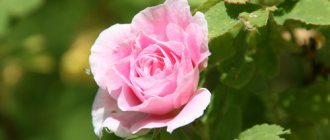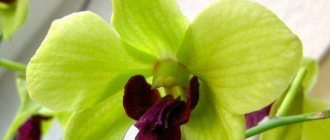- August 21, 2018
- garden plants
- Malysheva Irina
Park rose is a beautiful plant that successfully combines its lush flowering with the vitality of wild species. The bushes are strong, in good health, relatively tall - usually reaching one and a half meters. Flowering begins in early summer and lasts for more than a month.
It can be grown not only by experienced flower growers, but also by beginners who have recently just learned what it is - a park rose. These plants have increased winter hardiness. Despite the fact that their homeland is subtropics. Even in the middle latitudes of Russia, such roses can withstand winter without shelter.
Decorative types
The group of park roses includes all species of decorative rose hips. They bloom much earlier than cultivated varieties - from about the beginning of June. They have a pleasant smell. And in August they are decorated with orange fruits.
In Russia, rose hips are widely used in cities to decorate parks, squares, and areas near houses:
- Wrinkled rose (Rosa rugosa). The pyramid-shaped bushes are tall, reaching one and a half meters. The name of the plant justifies its wrinkled, shiny foliage. Dark pink flowers, up to ten centimeters in diameter, smell fragrant. This enjoyment begins early in June and continues throughout the month.
- White rose (Rosaalba). Gorgeous spreading bushes about two meters high are visible from afar. At the end of May, they are covered with countless buds, which open into flowers six centimeters in diameter, collected in clusters into loose inflorescences. The subtle scent of roses is carried far from the plant by the warm wind.
- Prickly rose (Rosa spinosissima). A very unpretentious plant. The height of the bush can be from seventy centimeters to two meters.
Its flowers are not double, milky white, with bright yellow stamens. Pleasant aroma. Blooms in May. The stems are covered with many small thorns.
Thanks to the painstaking work of Canadian and English breeders, varieties of park roses have been developed that have large double flowers. The new plants are not sissy at all. They steadfastly resist most diseases and withstand the difficult Russian winters quite confidently.
Characteristics of crop species and varieties, what they look like
Park rose: planting and care in open ground
Depending on their variety and type, park roses can have many distinctive features. This applies to both resistance to disease or frost, and external features, such as height, color and structure of buds.
Floribunda
The classification of floribunda roses was officially approved in 1976. It was developed by the Danish botanist S. Poulsen. This type is characterized by large flowers with a diameter of 5 to 10 cm. The height of the bush varies from 40 to 100 cm.
Remy Martin petals are painted in a delicate peach shade
Remy Martin
The park rose Remy Martin has double petals of a soft peach hue. The variety was bred in France in 1995. Inflorescences can be either single or with many buds. Towards the end of the flowering season, the edges of the petals take on a slightly pink tint.
Fluorescent
Description of Fluorescent is slightly different from other representatives of the floribunda group. The bush has a very wide spreading crown and reaches a height of 120 cm. Bright red buds with the edges of terry petals slightly curved outward form a cup-shaped shape. The inflorescences consist of 3-5 large buds with a diameter of 8 cm.
Note! Since Fluorescent is a remontant variety, it blooms twice in one season.
Rose hips
One of the few roses that are best covered for the winter in the regions of the Middle Zone. The height of the bushes can reach 3 m.
Louise Bugnet
A fairly old Canadian variety of roses, Lutiza Bagnet, was bred back in 1960 of the last century. The flower has snow-white petals with lilac edges. When the buds just begin to form, they have a completely cherry tint, only as they develop they acquire a white color.
Marchenland
A powerful plant 1.5 m in height with delicate apricot-salmon flowers. One bud on average has up to 80 petals. The leaf blades are light green in color with a glossy shiny surface. It tolerates even the harshest winters well, but is demanding on soil quality.
Musk hybrids
Winter-hardy varieties of roses include musk hybrids. Their height can be even greater than rose hips; with proper care, the shoots stretch up to 4 m. The buds do not exceed 8 cm in diameter and have a spherical shape.
Elmshorn
Vigorous shrub with glossy dark green foliage. Grows up to 2 m and has repeated flowering. Cup-shaped dark pink flowers tend to fade a little in the sun.
For your information! During the flowering period, an apple aroma emanates from the buds.
Lichterlo is characterized by pink-red flowers
Lichterlo
Park rose with pink-scarlet flowers with a diameter of 6-9 cm. Terry petals have a straight shape and do not open completely even at the end of their flowering. The height of the bush is 80 cm. Lichterlo tolerates cold winters well and is very resistant to diseases.
Shrubs
Scrubs have been known and in demand for a long time; for more than 50 years they have been one of the most popular subspecies of rose bushes. These frost-resistant plants can be of different sizes and growth types. There are low varieties with creeping shoots, and there are medium ones with erect branches. The bushes are distinguished by very abundant colorful flowering; in remontant varieties it repeats itself after 1-1.5 months. During the period when the buds open, the scrubs emit a pleasant aroma.
Moden Fireglow
Moden Fireglow has red-orange buds, the petals are slightly pointed with a terry surface. The low shrub has a branched shape and flexible shoots.
Important! It is better to plant in an open area and take timely care, since the bush often suffers from waterlogging of the soil.
Ghislaine de Feligonde
Just like its aristocratic name, the variety has a very elegant and sophisticated appearance. The low plant has light orange buds with a yellow base. In cooler seasons, the flowers take on a cool pinkish hue. The variety has practically no thorns on the shoots.
Explorer Series
This series of park roses was bred in Canada. Since the Russian climate is very close to Canadian, the Explorer varieties take root and grow well in Russia, as well as in the Scandinavian countries. In terms of external characteristics, the flowers are similar to scrubs. The bushes are very resistant to diseases and pests and do not require shelter for the winter. The color palette of bud colors is different, ranging from white to burgundy flowers.
Note! The only drawback of the Explorer series roses is their poor tolerance to long rainy periods, which can result in rotting of the root system.
Cuthbert Grant - bush with scarlet roses
Cuthbert Grant
Tall upright bush with dark red flowers. The buds, 8 cm in diameter, emit a strong spicy aroma during flowering. The big advantage of Cuthbert Grant is its good tolerance to waterlogging and disease resistance.
Shrub roses
Shrub roses do not exceed a height of 3 m, but there are also half-meter varieties. There are varieties with and without thorns. The average diameter of the buds is approximately 8 cm. The shape of the flowers can be completely different: cone-shaped, spherical, flat or peony-shaped.
Note! The shrub itself is most often of the spreading type, but varieties with a pyramid-shaped crown are often found.
Eifelsauber
It looks like the Märchenland variety, but has a lighter, cooler shade of pink. The buds bloom over a fairly long period, but thanks to this they do not lose their shape and color even in the hottest period of summer.
Beauties from Canada
These park roses grow comfortably in cool climates. They bloom well in the capricious Russian summer. In the south of the country, Canadians are too hot, they are languishing from lack of water. Roses overwinter without shelter, withstanding even cold temperatures of about thirty-five degrees for a short time.
Some of our most common varieties:
- John Davis. Large light flowers have a classic shape and look very elegant. The bush is two and a half meters high and pleases with its beauty all summer until the cold weather. It is impossible not to notice - its subtle aroma will invite you to admire the pink park roses.
- John Franklin. It grows into a neat bush a little more than a meter high. The roses are reddish, similar to double carnations, collected in small inflorescences. A very pleasant light smell is the hallmark of the variety. Blooms all summer long.
- Morden Sunrise. Large flowers, approximately eight centimeters in diameter, are painted a pleasant orange color with a pink blush. The bush grows no higher than one meter, but despite its growth, it is very resistant to many diseases.
English ladies
These park roses cannot be confused with others. Sturdy plants, tall and spreading, completely covered with large, heavy flowers. Each variety of unusual roses can be identified by its individual scent. The shape of the flowers repeats the pictures from ancient engravings and gives the plants a sophisticated charm. Several descriptions of park roses from England:
- Abraham Derby. The flowers are densely double and large in size. They have a lovely antique bowl shape. Near the bushes there is a light aroma of fruit. The flowers are apricot with pink edges, but show their color in cool weather. In the hot sun, the delicate colors fade. This variety grows well up to two meters, is not affected by diseases, and has two clearly defined waves of flowering.
- Benjamin Britten. The cup-shaped large flowers carry distinct wine notes in their scent. The color is very rich, red with an orange tint. Combined with its small (up to a meter) growth, such brightness makes the plant a wonderful accent in the garden. Like all “English” people, it is practically not susceptible to disease and is unpretentious.
- William Shakespeare - 2000. An improved replacement for the famous variety of red roses, William Shakespeare. It is characterized by amazing resistance to weather surprises. Huge double velvet-red flowers are also collected in large brushes. When they bloom, they look like deep bowls. Each flower stays on the bush for more than two weeks, and later opens to a flat state. Roses emit their characteristic scent. The bush is erect, quickly forms and blooms.
- Graham Thomas. Among the English representatives, the most popular is the yellow park rose. Excellent variety.
Such a rich color is difficult to find even among hybrid tea roses. Traditionally, cup-shaped flowers smell like expensive teas. The rose branches beautifully, forming a beautiful bush. Blooms continuously all summer long.
Plant characteristics
Depending on the variety, the height of the plant can reach 1.5 m. Park roses are characterized by long and early flowering (about 2 months) and high resistance to frost. They bloom in late May or early June - earlier than all other rose bushes.
For your information! Breeders have developed varieties of park roses that bloom twice per season.
The bushes of such roses are voluminous and lush. The buds are large, have many petals (about 100-150 pieces), and in most varieties they are double. Roses have a very pleasant intense aroma. Pollinated by insects and wind.
In terms of external features and some features, the park rose is similar to the hybrid tea. Both belong to the same genus of Rosehip, have double buds, love light and careful care. But there are still differences - varying degrees of frost resistance and the need for pruning.
The hybrid tea rose is very sensitive to cold, while the park rose winters quietly even in regions with a harsh climate. The park rose does not require pruning, but the hybrid tea rose needs to be pruned about 3 times a year. Due to its bushiness, park-type roses are ideal for forming hedges, which cannot be said about the hybrid tea group, since its representatives are small in height, but their color range is much richer.
Park roses
How to choose a site for planting
Before you start planting park roses, you need to choose the right place for this. A sunny area with good ventilation, but not too open, is more suitable for plants. But these roses can easily come to terms with partial shade.
You need to pay attention to the composition of the soil. Park varieties will grow well in soil that meets the following conditions:
- contains many nutrients;
- light and loose;
- soil acidity is close to neutral (pH 6-7).
Loam is most suitable for such conditions. If the garden has soils with different characteristics, the composition is adjusted by adding the missing elements.
All that remains is to choose a planting scheme and dig holes in accordance with it.
Top dressing
It is worth paying due attention to feeding the bush. Initially, fertilizers and minerals are added at the end of August; before that, all fertilizing should have been done during planting.
In the autumn, products containing potassium salt are applied under the root (wood ash, from which the infusion is initially made, helps effectively).
Adult roses need feeding only during the growing season; feeding should only be avoided during flowering. Organic substances are used for fertilizer: wood ash and cow manure. For 10 liters of water, take a liter of litter and 200 milligrams of ash. Manure can be replaced with chicken manure if necessary.
Fertilizers make the roots and crown hardy, flexible, and flowering varied and abundant.
Planting plan
It’s not difficult to create a spectacular flower garden yourself. A ceremonial rose garden and picturesque mixborders will become the pride of the garden if you take into account the rules of planning and think through the harmony of rose varieties with the surrounding plants.
As a component of a living composition, the rose is a wonderful universal plant. It works great as a solo plant, or can look good in combination with other plants. The most common types of flower beds, convenient for planting and caring for park roses:
- A flowering border is a classic form of a rose garden. Suitable for placing such tall and bulky varieties along the hedge. Plants are placed in a checkerboard pattern at a distance of 100-150 cm, filling the free spaces with other varieties and types of roses.
- Mixborder is a very popular flower garden. Flowering herbaceous, tree and shrub plants are planted on a fairly wide strip. It is necessary to take into account the growth rate and the growth area of plants. And also choose the flowering time of the plantings so that the mixborder always blooms. Large plants are placed in the background of the composition. The middle ones are placed closer to the center, and ground covers take place in front and between them. These can be either herbaceous perennials and annuals, or shrubs, even creeping woody plants.
Responsible moment
What you need to pay attention to when choosing rose seedlings from a seller for your garden:
- On the label. High-quality seedlings are always provided with a tag. It contains information about the variety: which group of roses it belongs to, what conditions it prefers, the name of the manufacturer. The ADR mark is assigned to varieties that are especially hardy in unfavorable conditions and resistant to diseases.
- On the number of shoots. Top quality seedlings have three freely spaced shoots. Two strong shoots are also not bad. But the price category should already be lower.
- On stems and buds. They should be a nice green color. The bark of the shoots is intact, without damage or foulbrood. The buds are large and well developed.
- On the roots. Choose whole ones, not broken ones. If the root system is closed, the substrate should be moist and not overdried.
Finally, you can start planting roses. If the seedlings have an open root system, then before planting they must be immersed in water for several hours. Carefully trim the roots with pruning shears, trying not to damage the white thread-like shoots. The stems of the seedling need to be trimmed, leaving 2-4 buds.
The holes for the roses are made in such a size that the roots are well spread out, and the root collar is buried into the ground by about eight centimeters. If a seedling is planted with a clod of earth, the hole should be about ten centimeters wider and deeper than it.
The young bush is carefully covered with soil, holding it at the desired level. Having compacted the soil, the plant is hilled up another fifteen centimeters, and a groove is made around it for water. Water the planting well.
Park roses: care and cultivation
When purchasing these beautiful plants, you don’t need to think that the troubles will end with planting. While the bushes are still very small, they need special care. It is the efforts of the grower that will help the roses grow beautiful, resistant to pests and diseases.
The root system and shoots of plants are formed within three years. All this time you will have to loosen the soil, carefully water it, patiently apply fertilizer, and, if necessary, prune.
Water is especially important in spring and summer. Plants are actively growing and blooming. In the photo, the park rose feels great.
With the onset of September, watering is not needed; the plant begins to prepare for winter.
After planting the bushes in the spring, in dry weather, they are watered once every three days. Then it is enough to do this weekly. You can immediately see if the rose does not have enough water. The shoots stop growing, the flowers become smaller, the foliage withers and crumbles. The norm for watering an adult bush is a bucket of water at a time.
After a day, you can begin to loosen the soil. This will improve its breathability. The procedure is carried out carefully, avoiding damage to the roots and removing weeds.
Mulching of the tree trunk circle is carried out using organic matter, approximately five centimeters thick. This gardening technique will help keep the soil moist longer, prevent the roots from overheating in the heat, and reduce the number of weeds. Humus, peat, bark, chopped straw, compost - all this can serve as mulch and, over time, provide the rose with additional nutrition.
As a rule, this procedure is carried out in May. In autumn, you can mulch in October, before the soil freezes. But first the weeds are pulled out. From time to time everything is repeated again.
In the spring, at the beginning of the season, park roses are fed with nitrogen fertilizers containing microelements: magnesium, boron, iron. Special fertilizers are diluted in water and applied after watering. A second soil enrichment will be required in August or September. Eliminate nitrogen, increase the content of potassium and phosphorus. In October, it is enough to put rotted compost as mulch. Next year the plants will get a good start.
Features when planting
For comfortable growth, full development, and abundant flowering, the rose should be planted in a well-ventilated place protected from drafts. In addition, this flower loves the sun very much.
It, of course, can grow in a dark place, but with rare flowering. For this reason, it is not recommended to plant the plant near large trees or tall buildings that will shade it.
As for the soil, the rose is not particularly picky.
Any soil composition is suitable for it. However, loamy soil with a high humus content is best.
A good oxygen supply is also important. If the soil is heavy, you can add peat or compost to improve it. But everything is good in moderation. Excessively light soil is not suitable. Then fertilize it with manure or turf soil.
The landing process itself:
- A hole is dug. The depth of the hole should be deep enough for the rose's root system to fit comfortably into it.
- Fill the bottom of the hole with compost soil. Add some bone meal. The plant needs fertilizer every other year.
- Then place the sapling. Its roots should not bend upward. You should also check the position of the root collar. The depth should be several centimeters.
- The trench is filled and compacted.
- The seedling should be watered.
When a rose is planted in the fall, it should be prepared for the coming cold weather. To do this, it is necessary to make embankments of great height. Seedlings are opened in early April.
Reproduction
It’s easy to grow your favorite variety in the garden in the right quantity. Every gardener has a photo with the names of park roses that have sunk into their soul. There are several methods of reproduction:
- By layering. At the beginning of the growing season, the stem is bent to the ground and, secured there, dug in. Young plants emerge from the buds, which are separated and planted in a flower bed next year.
- Overgrowth. In the spring, one-year-old offspring are separated from the mother bush, the stems are shortened by one third and replanted.
- By division. Overgrown young bushes are cut into small parts - divisions - with pruning shears. This procedure can be carried out in spring or early autumn.
- By cuttings. The most labor-intensive method, but it allows you to get a lot of planting material at once. Cuttings are taken both green (in spring) and woody (in autumn). All shoots are planted for rooting only in the spring.
Preparing for winter
Increased protection against sudden temperature changes
The accuracy of winter preparation depends on the climate and the selected variety. Mature bushes are quite resistant to low temperatures and therefore do not need additional shelter. For young plants the situation is different.
They will be protected for the winter if you do the following:
- The soil at the base of the bush is rolled
- Wrap the branches in craft paper (preferably in several layers).
These measures protect young plants from severe temperature changes and allow them to survive the winter.
Pests and diseases
Although park roses have good health (especially modern varieties), it is still necessary to be fully prepared in unfavorable circumstances.
In wet years, some plant species can be affected by spheroteca. It is known to gardeners as powdery mildew. A gray coating appears at the bottom of the leaf. The spores quickly spread throughout the plant, and the disease spreads to neighboring bushes. It is dangerous for roses and can lead to death. To prevent this, in early spring the plants are sprayed with the following preparations: “Topaz”, “HOM”, “Skor”.
Among the pests that can visit the rose are the crimson weevil, leaf roller, garden beetle, and spider mite. They do not attack every year, and they will not be able to harm the plant so much that it will disappear completely. But when there are a lot of them, they spoil the decorativeness of the bush and depress it. In the photo there is a park rose and a pest - the garden beetle.
The larvae feed on roots and buds, and the adults gnaw out everything: buds, leaves, flowers. Therefore, beetles must be collected and destroyed. And the plants are sprayed with “Aktellik”, “Vermitek” or “Fitoverm”.
Reliable prevention
Compliance with agricultural practices and careful attention to park roses will help prevent the appearance of diseases and pests. Experienced flower growers advise:
- water only at the roots, avoiding getting the leaves and flowers wet;
- feed roses in time according to the season;
- carefully periodically loosen the soil under the plants;
- pull out weeds;
- in the fall, avoid watering altogether;
- In late autumn, trim unripe young shoots and remove leaves.
By choosing a well-lit place in your dacha or garden plot, preparing the right soil and providing proper care, it is not at all difficult to grow such wonderful park roses as in the photo.
Condition requirements
Let's find out in which place in the garden and in what soil it is best to plant park roses.
Location and lighting
Park roses do not have any special requirements for the level of illumination - they can grow both in the sun and in partial shade. However, the shrub will have the best decorative effect if there is ample lighting.
Temperature
Most plant varieties survive cool temperatures quite well. There are also varieties that do not require shelter even for the winter.
Humidity and drafts
Park rose can be grown in fairly dry air, but drafts are best avoided. To prevent the rose from being exposed to cool gusts of wind, it is recommended to plant it on the south side of buildings and fences.
Priming
Park rose can grow in poor soil, however, it will show its best decorative qualities in fertile, humus-rich soil. The best choice is loam. The soil acidity level should be moderate.
It is not advisable to grow the plant in dense soil. If the soil on the site is clayey, it is recommended to loosen it with compost and sand before planting.
Important: in loose, fertile soil, plant cuttings take root much faster.











